We made an interesting discovery this year in our wooded acres on the mountain ridge. A lot of undergrowth is present near the wood’s edge. That’s not too surprising because the deer population has a lot of choice of what to eat around here in the country. We see them crossing our property as they go into or out of the crop field next door, so to speak.
We did plant some goldenseal one year that didn’t flourish and I blamed their lack of growth and eventual disappearance on the local deer population. Perhaps so.
Anyway, I was surprised that we had these little low-growing shrubs flower this year. In overall appearance, these shrubs look similar to the deerberry that we’ve seen flower many times. This year was the most spectacular display of deerberry blooming so far!
I’m told by the local farmer that they call the plant “huckleberry”. It’s like a wild low-growing blueberry. Indeed, Newcomb’s description for the Early Low Blueberry, Vaccinium angustifolium, fits it like a glove. Peterson’s Medicinal Plants Guide
calls this species the Late Lowbush Blueberry with its blueberry fruit ripening in August or September. Our lowbush blueberry is probably the early variety as its fruit was already turning from light green to pink in late June before turning blue.

Flowers dangle in clusters at the tips of stems. Urn-shaped with five flaring tips, blueberry blossoms are typically white with shades of pink. The flowers of huckleberries and blueberries are very similar.
Leaves of the blueberries, Vaccinium spp., are soft to the touch and no where as near as leathery as the leaves of the Box Huckleberry, Gaylussacia brachycera.
Lowbush blueberries are about a foot tall, with green stems that terminate in oval-shaped, pointy-tipped leaves. Flower clusters are borne on the green stems between leafy side branches.


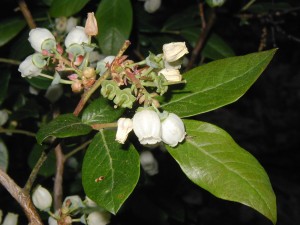
A week or more later, other huckleberries were seen blooming in the woods. Some of the flowers were more pink than white.
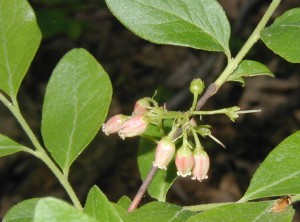
Fruits are small and ripen into the familiar blue berries in early to mid July. One can just see the remnants of the flower blossom’s five tips on the bottom of the berry.
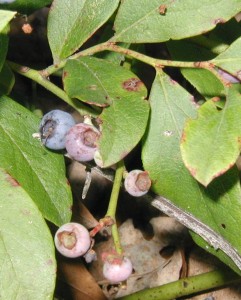

I tasted the lowbush blueberries, but I didn’t think they had much flavor, at least not compared to the highbush blueberries we planted a few years back. We’ll leave the small berries for the birds and chipmunks in hopes that they’ll leave us our delicious blueberries.
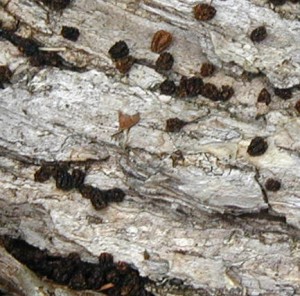

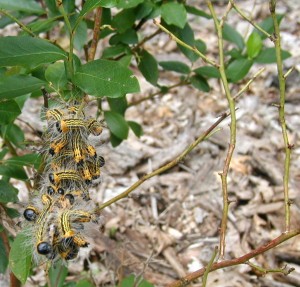
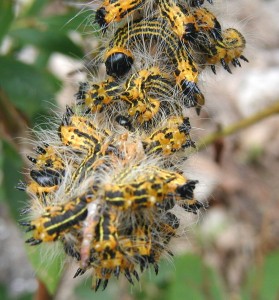
![Reblog this post [with Zemanta]](http://img.zemanta.com/reblog_e.png?x-id=0e92960e-6be7-4ae4-912c-83721c0b601d)